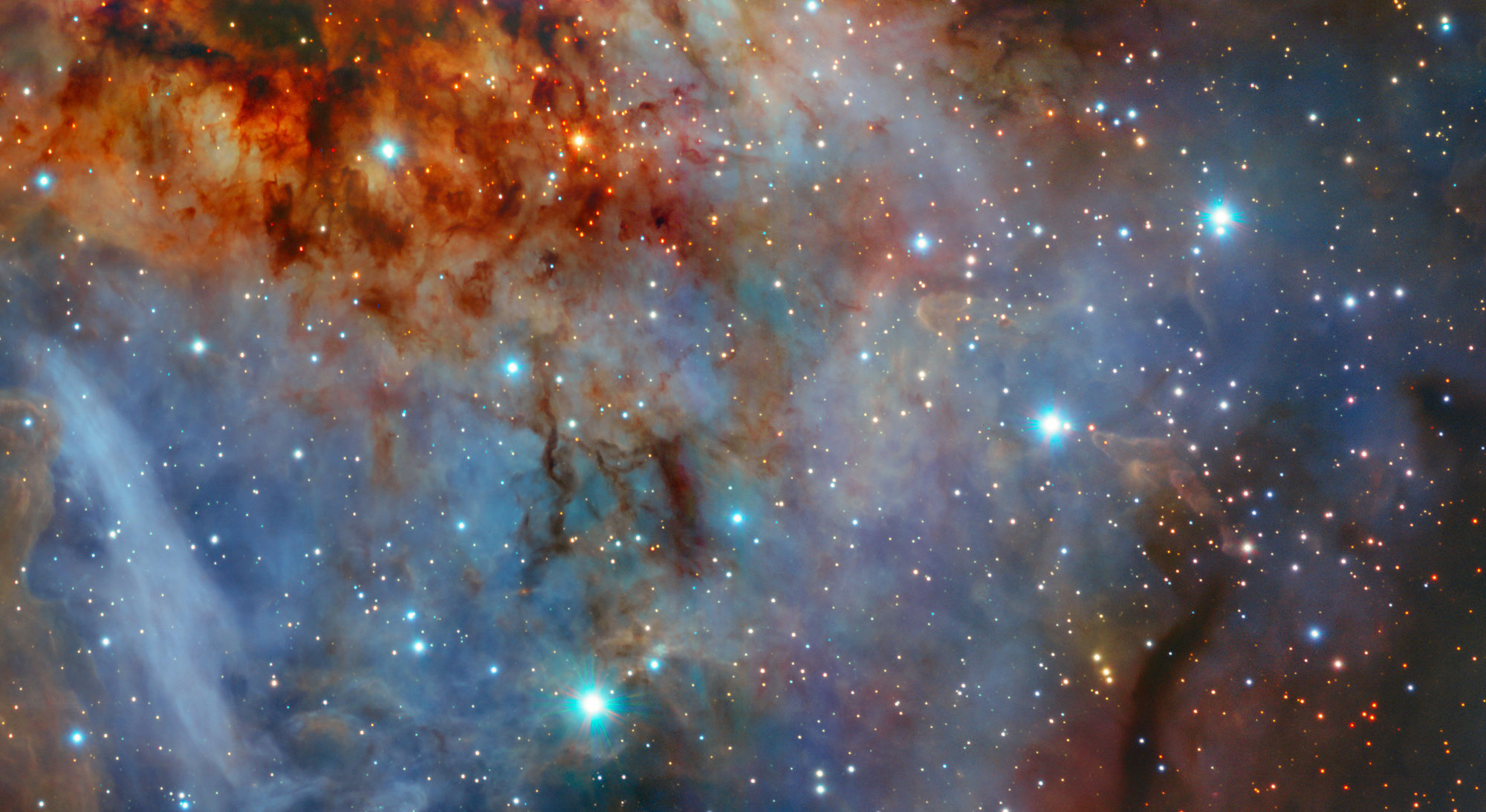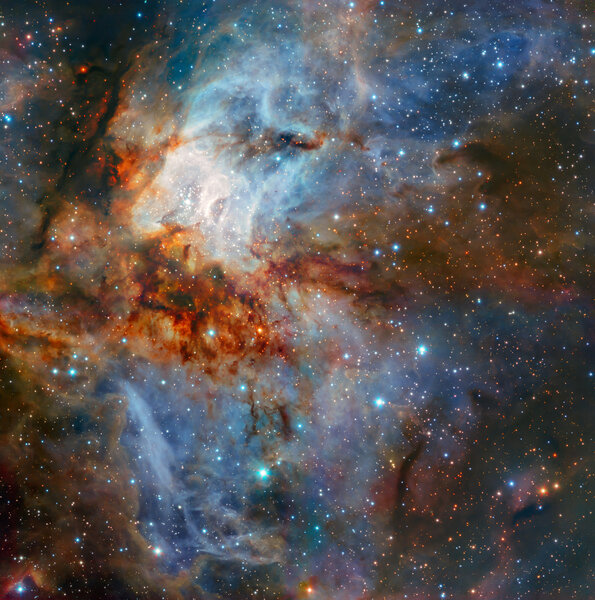Create a free profile to get unlimited access to exclusive videos, sweepstakes, and more!
A HAWK-I peek inside a stellar nursery

Sometimes, I just want to write about an object because I want to show you an awesome picture.
Such is the case with the star cluster RCW 38. It’s what’s called an embedded cluster: The stars in it are so young they are still enshrouded in the gas and dust from which they formed. This material is so thick that in optical light (the kind of light we see) not very many stars are actually visible.
But when you point one of the four Unit Telescopes of the Very Large Telescope — an 8.1-meter monster located under the very dark skies of Chile — and let the light fall into the HAWK-I (the High Acuity, Wide field K-band Imaging detector), what you get is really, really pretty.
How about that?
This image was made using infrared light, which makes all the difference. IR light is longer wavelength than the kind we see, and is able to better penetrate dust that is opaque to visible light. That lets us see more stars in the image… but I’ll note that the dust surrounding RCW 38 is so thick that even IR can’t make it through some parts. You can still see dark ribbons and filaments of dust all through it.
As I perused the image, I also saw some tadpole-shaped proplyds (a kindof abbreviation standing for protoplanetary disk), which are dense knots of gas and dust that are just in the process of forming stars in their cores. They look like teardrops because nearby massive stars are bombarding them with intense radiation, eroding them like sandbars in a river. Poke around the high-res version of the image and you’ll find them. They’re small, but remember, when you look at one you’re seeing an entire solar system being born.
The cluster of stars itself is visible just to the upper left of center. There are hundreds of newly born stars there, a handful of which are monsters, dozens of times the mass of the Sun and blasting out tens or even hundreds of times the amount of light the Sun does. If RCW 38 weren’t so deeply buried in that nebula, this would be one of the most celebrated objects in the sky. At 5,500 light years or so away, it would be one of the brightest nebulae in the sky. Instead, it takes powerful telescopes to investigate it.
The image is actually made of three separate infrared colors: what we call the J band (at a wavelength of 1.26 microns; the reddest light the human eye can see is about 0.75 microns), H (1.62 microns), and K (2.15 microns). HAWK-I uses filters to pick out those colors, and then they are combined afterwards and displayed as blue, green, and red, respectively, to mimic the colors our eyes see.
Stars you see as red in the image are really red. Some, if not most, look that way because of the dust; it allows longer wavelength light through better than shorter wavelengths, so even a blue star would look red in these images where dust is thick. Weirdly, the stars that look blue in the image would probably look red by eye, because that means they’re putting out most of their light in the J band, which is still infrared! It takes some practice to interpret images like this.
It’s important to astronomers to have instruments like HAWK-I, because as this image makes clear, without it we wouldn’t see nearly as much structure in this cluster and nebula. But that information is critical to understand how stars are born; a lot of stars in the galaxy (heck, in the Universe) get their start in nurseries like this. Understanding them means understanding how stars are born, which means understanding how our Sun was born, which means understanding how our planet was born.
And that means we get closer to answering one of the most fundamental philosophical questions humans can ask: How did we get here?
Science! Guided by philosophy, aimed by our intellect, powered by our curiosity, realized by our engineering… and appreciated by our sense of art. Astronomy skillfully and magnificently combines many of the things that make us human.















